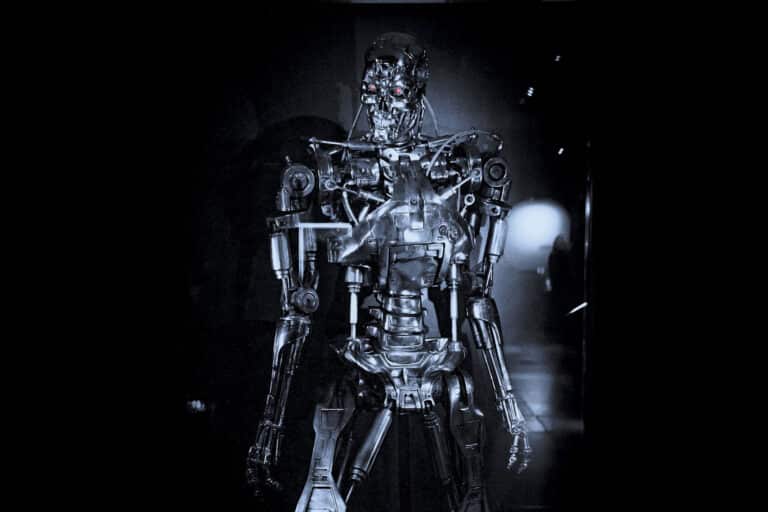PEOPLE
Life Imitating Art

WORDS: Chris Nyst PHOTOGRAPHY Brian Usher - [email protected] Plus supplied
Are Genetic Scientists Taking the World Backwards — or Too Far?
As an avid movie enthusiast, I have to admit I was slightly unsettled when I recently read the strange news that an American biotech company is currently working to reincarnate long-extinct, prehistoric creatures. Does this sound vaguely familiar to you? Because it certainly did to me.
Apparently, scientists at the Dallas-based corporation – appropriately called Colossal – are currently editing the genes from the DNA of ancient woolly mammoths, those big hairy monsters that once terrified our cave-dwelling forebears to death. But it’s all for a very good cause, apparently. Colossal hopes to one day reintroduce its woolly mammoths into the wild, where they will run free in the Arctic tundra, improving the world’s ecosystem and combatting climate change. Sounds pretty good, doesn’t it?
But wait a minute. Did any of these guys, by any chance, see the movie, Jurassic Park? As I recall Steven Spielberg’s 1993 blockbuster hit about genetic scientists bringing dinosaurs back to life, that little social experiment didn’t end all that well for the humans. Before we even got through our first big bucket of pop-corn, Jeff Goldblum’s kooky character – the sexy, wise-cracking mathematician Dr Ian Malcolm – delivered an ominous line, “If there’s one thing the history of evolution has taught us, it’s that life will not be contained.” And I’m pretty sure he turned out to be spot-on about that.
I had the good doctor’s prophetic words still ringing in my ears when I moved onto the next wacky story from the weird world of science. As soon as I read the headline – Shape-Shifting Robots – I figured this one was going to be even more crazy. And I was right.
According to the respected American scientific journal, Science News, it seems that researchers have created a robot that can melt and reform back into its original shape, allowing it to complete tasks in tight spaces and even escape from prison by just dribbling between the bars.
Whaaaaaat?!! Are you kidding me? That’s straight out of James Cameron’s sci-fi classic, Terminator 2: Judgement Day. You remember that one, where the evil Skynet sends the badest baddie in cinema history back through time to terminate the juvenile resistance leader, John Connor? And who was this super-villain? None other than a T-100 Terminator – an advanced, prototype, shape-shifting robot made of indestructible liquid metal. And now the scientists are going to make us one, all of our own.
According to Science News, in a series of tests, the new model shape-shifting robot was able to jump up to 20 times its body length, climb walls, support an object about 30 times its own weight in its solid state, and escape from mock prison by melting itself down to a glug, and then reforming itself. Sounds just like the T-100, right?
“It’s a compelling tool,” Harvard University Robotics engineer Nicholas Bira assured Science News. Really? Maybe someone should go back and have a second look at Terminator 2, or at least bring back big Arnie Schwarzenegger as a precautionary measure, just to keep a close eye on what those boffins are up to.
Since ancient times, popular wisdom has held true to the concept of mimesis – the idea that art is nothing but an imitation of life itself. But in the late nineteenth century, the popular Irish poet and playwright Oscar Wilde, who had a quirky talent for turning conventional thinking on its ear, reversed that logic completely.
“Life imitates Art,” Wilde opined,” far more than Art imitates Life.” In his 1889 essay, The Decay of Lying, the eccentric writer reasoned that what we find in life and nature is not what is really there, but is actually just what artists have taught people to find there, through art.
Whether or not one is willing to wholeheartedly embrace Oscar Wilde’s view of anti-mimesis, one thing is clear. History is replete with examples of Life’s uncanny knack of imitating Art.
My French-born father beamed with Gallic pride at the fact that the great French novelist Jules Verne dreamt up Captain Nemo’s underwater ship, the Nautilus, long before naval engineers invented the modern-day submarine. Anyone older than about twenty-five knows Chester Gould’s 1940s comic strip character Dick Tracy was calling his buddy Go-go Gomez on his futuristic wrist-phone about sixty years earlier than Sony ever thought of releasing its SmartWatch, and American author Morgan Robertson’s 1898 novella The Wreck of the Titan featured an ocean liner – incidentally called the Titan – striking an iceberg and sinking, fourteen years before the “unsinkable” Titanic went down in the icy North Atlantic.
Even the Pentagon knows Life imitates Art. After the Twin Towers went down on 9/11, the US Government immediately enlisted about thirty of Hollywood’s top creatives – A-listers like powerhouse director and screenwriter Oliver Stone, “Law & Order” producer Dick Wolf, and “NYPD Blue’s” David Milch – to write them screenplays about the next terrorist attack on America, just so the US Military brass would know in advance where the threats would be coming from.
And maybe the most topical example of all of Life’s copycat capers is the hit comedy series Servant of the People, that featured on Ukrainian TV between 2015 and 2019. It starred an actor/comedian called Volodymyr Zelensky and told the inspiring story of a simple everyday Joe who is unexpectedly elected President of Ukraine. He starts his tenure as a fish-out-of-water but goes on to become a courageous and inspiring leader who stands up to the oligarchs and fights for his people. Sound familiar?

Chris Nyst
I guess even the great Oscar Wilde couldn’t have scripted it better.








